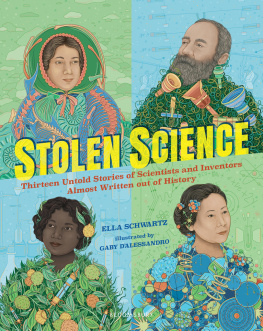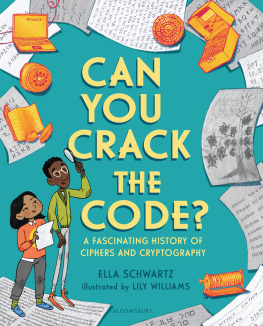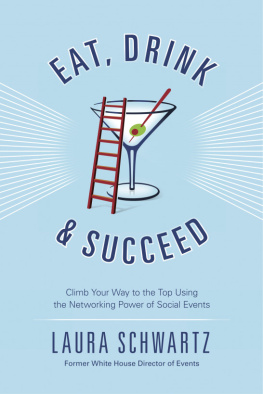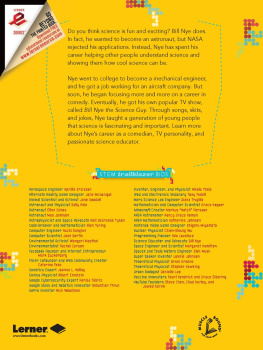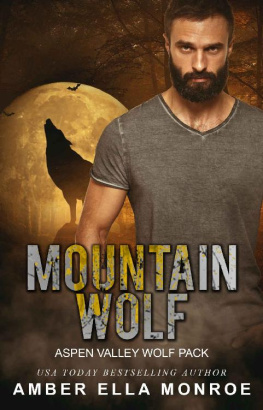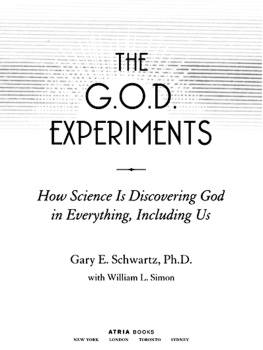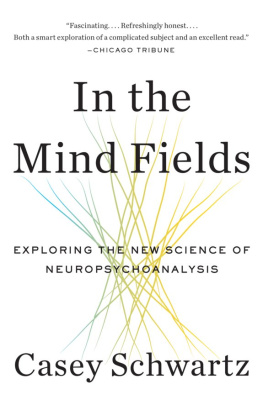Ella Schwartz - Stolen Science
Here you can read online Ella Schwartz - Stolen Science full text of the book (entire story) in english for free. Download pdf and epub, get meaning, cover and reviews about this ebook. year: 2021, publisher: Bloomsbury Publishing, genre: Non-fiction. Description of the work, (preface) as well as reviews are available. Best literature library LitArk.com created for fans of good reading and offers a wide selection of genres:
Romance novel
Science fiction
Adventure
Detective
Science
History
Home and family
Prose
Art
Politics
Computer
Non-fiction
Religion
Business
Children
Humor
Choose a favorite category and find really read worthwhile books. Enjoy immersion in the world of imagination, feel the emotions of the characters or learn something new for yourself, make an fascinating discovery.
- Book:Stolen Science
- Author:
- Publisher:Bloomsbury Publishing
- Genre:
- Year:2021
- Rating:3 / 5
- Favourites:Add to favourites
- Your mark:
- 60
- 1
- 2
- 3
- 4
- 5
Stolen Science: summary, description and annotation
We offer to read an annotation, description, summary or preface (depends on what the author of the book "Stolen Science" wrote himself). If you haven't found the necessary information about the book — write in the comments, we will try to find it.
Stolen Science — read online for free the complete book (whole text) full work
Below is the text of the book, divided by pages. System saving the place of the last page read, allows you to conveniently read the book "Stolen Science" online for free, without having to search again every time where you left off. Put a bookmark, and you can go to the page where you finished reading at any time.
Font size:
Interval:
Bookmark:

Also by Ella Schwartz
Can You Crack the Code?

For Harrison, Sammy, and Nate. Always look for the truth.
E. S.
For Gail. Thank you for being my mentor and friend.
G. D.
T ABLE OF CONTENTS
When you think of historys most famous scientists and inventors, who do you think of?
Albert Einstein? Thomas Edison? Galileo Galilei? Charles Darwin? Sure, these were very famous scientists, but historys most important scientists are not all serious-looking gentlemen with fluffy hair or fluffy beards who were classically educated in prominent universities. Certainly these men were scholarly, but not all important scientists and inventors looked like these guys. Where are the women researchers? Where are the Black inventors? Where are the immigrant scientists?
Sometimes history is a big lie.
If I challenged you to name a well-known woman scientist, who would you think of? Maybe youd say Marie Curie. Sure! Marie Curie was a brilliant scientist. Can you think of anyone else? Jane Goodall might come to mind. Katherine Johnson has recently gained the attention she so deserved. But what took so long?
Why dont we hear stories of more women, people of color, and immigrants in the sciences?
Its most definitely not because these groups werent performing groundbreaking work. Its because of something else.
Over the centuries, certain scientists and inventors have been overlooked time and again, not because their work wasnt brilliant, but because of who they were. For much of history, discriminated groups including women, people of color, and immigrants often had to claw their way past biases, only to have the credit for their discoveries stolen by their colleagues. Its time to set the record straight and give credit where credit is due.
This book will finally celebrate the achievements of important, often underrepresented, scientists, engineers, and inventors. It will also expose that history isnt always as it may seem.

MARY
ANNING
17991847
One day, when Mary Anning was just a baby, she was being held by a neighbor, who stood with two other ladies under an elm tree. The group was watching a horse show pass by when, suddenly, lightning struck the tree, instantly killing all three ladies. Baby Mary was in critical condition. She was rushed home and revived in a tub of hot water. The village doctor declared the babys survival a miracle. This may have been the first remarkable experience of young Marys life, but it would not be the last.
The Anning family lived in the town of Lyme Regis, England, at the turn of the nineteenth century. Marys dad was a carpenter, but his wages were barely enough to feed his family. To supplement his income, he would often sell sea trinkets to tourists. These souvenirs, sometimes called curios by the locals, had names like snake stones and devils fingers. Some tourists believed these curios had magical powers.
Were these curios actually magical? Did they have mystical properties? Were they otherworldly? These curios were, indeed, from an unrecognizable world long forgotten. But they were not magical. They were actually bone fragments of ancient creatures: fossils.
Back in the early 1800s, fossil hunting, or paleontology, wasnt a science like it is today. It was more of a hobby. The town of Lyme Regis, England, now known as the Jurassic Coast, had plenty of fossils if you knew where and how to look for them. The town bordered the ocean, and after big rainstorms, some of the rock cliffs would break away and fall into the sea, exposing evidence of an ancient world below. Since the money from fossil selling was so important to the Anning family, Dad often took Mary and her brother Joseph along on fossil-hunting outings. He trained them to spot fossils in the cliffs of Lyme Regis and to carefully remove these ancient treasures from the limestone.
But fossil hunting in the cliffs of Lyme Regis was a dangerous business. The Anning family had to wade through the water around unstable cliffs, looking for specimens that may have fallen from the recent rockfall. Rockfalls often led to more rockfalls and mudslides, usually without any warning. Sadly, Marys dad was seriously injured in an accident while searching the unstable cliffs of Lyme Regis and later died from complications of these injuries.
The Anning family was left with practically nothing. To survive, Mary and Joseph, just young kids themselves, had no choice but to continue their fathers fossil-hunting work and hope for some good finds. If they peddled curios to visiting tourists, they might earn enough money for food.
Luckily their father taught them well.
Young Mary and Joseph ventured out to the cliffs, now all alone, in search of ancient treasures. Most of the time their hauls would be seashells or small fragments. These finds were barely enough to feed the struggling Anning family. And then, in 1811, Joseph spotted something they had never seen in the rock wall. After excavating the specimen, Joseph and Mary realized they had something that was far more unusual than seashells. This was a four-foot-long skull of some kind of sea creature.

Joseph, as the oldest Anning child, had no choice but to take on responsibilities to support the family. When he stumbled upon the discovery of the ancient sea creatures skull, he was already working as an apprentice. This was an important opportunity for Joseph and would earn him steady wages to help support his widowed mother and young sister. Joseph didnt have much time for fossil hunting anymore.
But Mary was excited by the skull her brother had found and had a suspicion there may be more bones nearby. Surely a head must go together with other body parts? Mary returned to the site, determined to find more of the sea creature. She made a crucial discovery that would change her life forever. Sure enough, in the area near where the skull had been found, she spotted more bones. Mary deduced these bones must belong to the same creature whose skull they had already unearthed. She was so excited by her discovery, she recruited an excavation team to help her remove the bones from the rocks. It took the team many months, but when their work was complete, and they reunited all the bones with the skull, they had the complete skeleton of an astonishing seventeen-foot-long sea creature.
People in the village of Lyme Regis thought Mary had uncovered a monster. A creature with the form of the skeleton discovered by Mary had never been seen before. It looked like a cross between a dolphin and a crocodile. Most people at the time assumed that this fish-lizard creature had migrated away from Lyme Regis to some faraway land. The villagers were probably grateful that this monster was no longer lurking nearby. The idea that this animal was actually extinct would probably not have occurred to them as extinction was a science that was not yet accepted.
It turned out the remains discovered by Mary belonged to a dinosaur called ichthyosaur. Marys dinosaur was not the first ichthyosaur discovered, but it was the most complete skeleton of its time. News about Marys dinosaur began to spread, attracting interest from Great Britains scientists and collectors. Mary sold the fossil to the lord of a nearby manor, and it eventually found its way to a museum in Great Britain. In return, Mary received enough money to feed the Anning family for six months.
Font size:
Interval:
Bookmark:
Similar books «Stolen Science»
Look at similar books to Stolen Science. We have selected literature similar in name and meaning in the hope of providing readers with more options to find new, interesting, not yet read works.
Discussion, reviews of the book Stolen Science and just readers' own opinions. Leave your comments, write what you think about the work, its meaning or the main characters. Specify what exactly you liked and what you didn't like, and why you think so.

